The 2015 Razer Blade Review
by Brett Howse on February 11, 2015 2:00 PM EST- Posted in
- Laptops
- Razer
- Razer Blade
- Notebooks
- GTX970M
Display
The 2013 Razer Blade had a 1600x900 TN panel, and for 2014 Razer replaced it with a Sharp IGZO 3200x1800 LCD. At 262 pixels per inch, it was one of the higher DPI panels on any laptop last year. While High DPI in the Windows world is not perfect, it has gotten a lot better over the last year. In my experience, the benefits of High DPI outweigh the drawbacks. Major vendors like Adobe have released High DPI aware versions of their software suites, and even Google Chrome has made good progress with High DPI support in Windows this year. The situation is still not perfect, but we are getting better. Steam used to have issues, but they have all been resolved, however Origin does not scale at all. Still, the display in the 2014 Razer Blade was one of its stand out features.
For 2015, Razer has kept the exact same display, which is not a bad thing at all. The 2014 Razer Blade had one of the more accurate displays out of the box, with decent brightness and great contrast. As this is a Sharp IGZO (Indium Gallium Zinc Oxide) thin film transistor (TFT) based LCD, the thinner TFT allows more light to pass through, and keeps the power requirements of the backlight down. Some panels go with a Red Green Blue White pixel arrangement, with the white pixel just there to increase brightness. Sharp’s IGZO panels keep with the standard RGB stripe, allowing the possibility for a more accurate panel.
Razer includes a default color profile for the display as well. Blade.icm pulls the calibration in a lot closer than the standard panel would be. Just because it is IGZO (possibly AHVA but certainly not TN) does not mean it is going to be accurate, so it is good to see the default color profile included as most people do not have any equipment to calibrate the monitor themselves. All of our uncalibrated tests were run with the Blade.icm as the default profile for Windows.
To calibrate our displays, we use SpectralCal’s CalMAN 5 software suite with a custom workflow. An X-Rite i1Display Pro colorimeter is used for brightness and contrast measurements, and an X-Rite i1Pro Spectrophotometer is used for color accuracy tests. We calibrate all displays to the sRGB standard, and to 200 nits brightness.
Uncalibrated with default Blade.icm profile
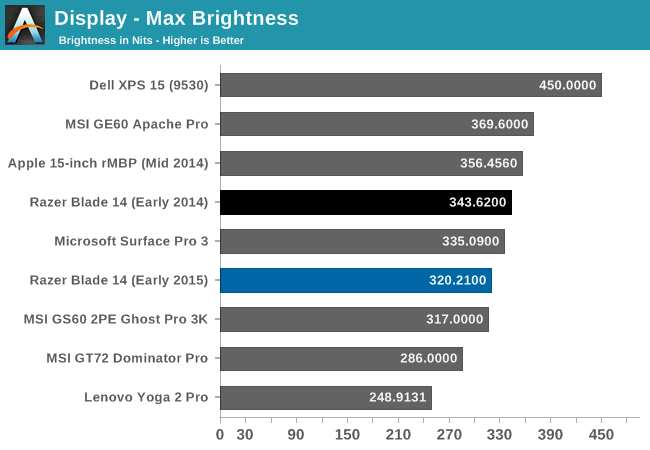
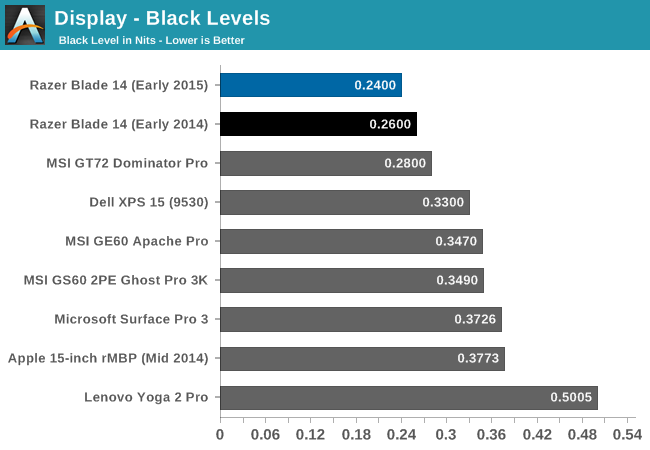
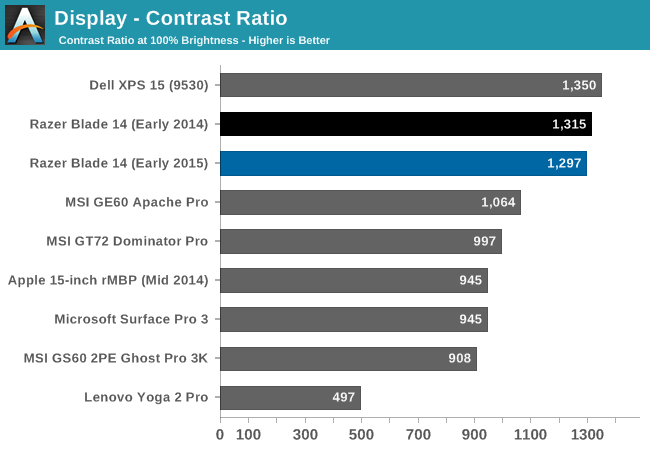
Razer rates the Blade at 350 nits, and it fell a bit short of that mark. This year’s model that was received could achieve 320 nits. Contrast ratio was still very good though with excellent black levels.
Here we can start to see that our 2015 sample was not as dialed in, with a blue shift happening at the higher end of the grayscale sweep, pulling the grayscale up to 5.1. White point is a bit blue as well at 7121.
Saturations are also a bit higher in this year’s model, with a jump to just over three. Three is still a good value though.
GMB drops compared to the 2014 model, but still comes in at a very respectable 2.58. We would like values under three if possible, and the review unit delivers.
So out of the box, with the Razer color profile, the review unit in hand today does not quite live up to the lofty results from the 2014 model. It still comes in with a good solid result, but does not top the charts for this year.
However, we can also calibrate it to see if we can improve it. Since the main issue was the grayscale being off, this is something that can be corrected through calibration.
Calibrated – 200 nits
Now we can see that the 2015 panel is just as good as the 2014 panel (which is not a huge surprise since it is the same specification) and the grayscale falls to just 0.7, and the improvements in gamut, saturation, and GMB with the new icc file bring those values in around 1.0 to 1.5. Just like last year, the blue value still overshoots, but the result is a fantastic.
One thing that we do not normally mention in our laptop reviews is minimum brightness, because normally, it is very low. As an example, the Yoga 2 Pro goes all the way down to under 3 nits. That is a bit excessive, but the HP Stream minimum brightness is 16 nits, and the Dell Latitude E5250 was 15 nits. Somewhere around 15-20 nits is good, and lets you use the laptop in a dark room very easily.
The Razer Blade has a minimum brightness of 90 nits. This is far too high for a minimum brightness, and makes it a chore to use in a dark room. Hopefully Razer can release a BIOS upgrade with new settings and allow this to go lower.




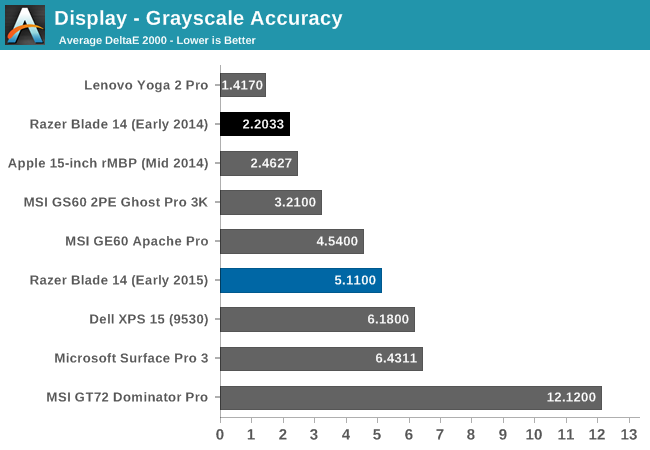

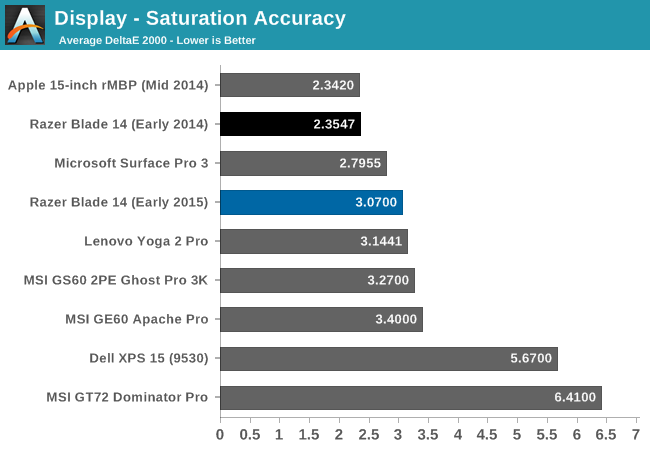

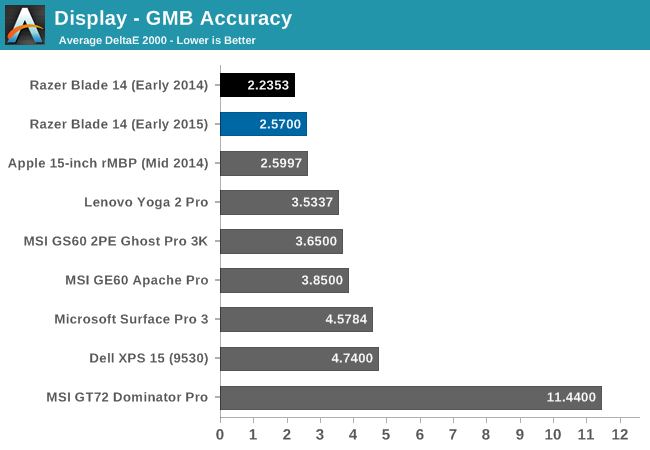

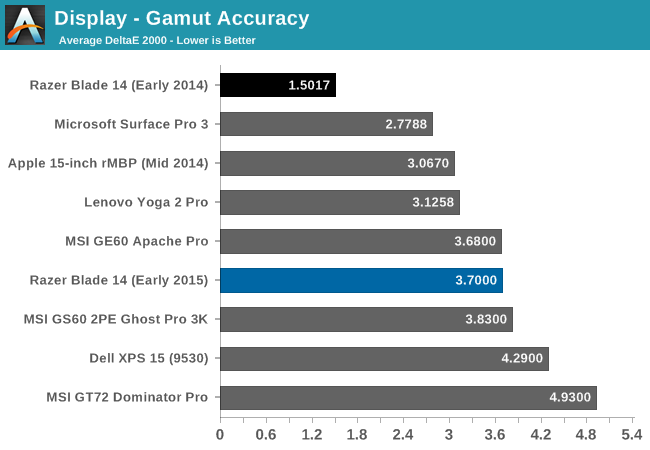
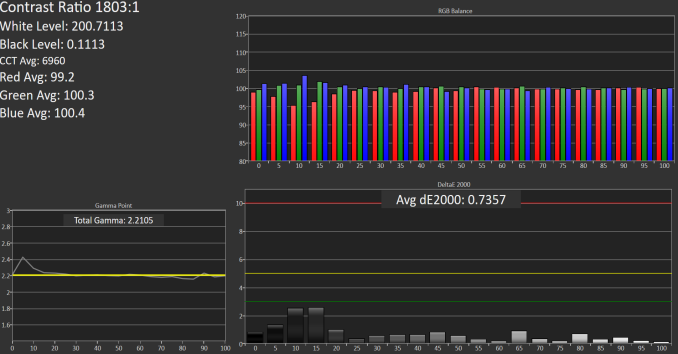
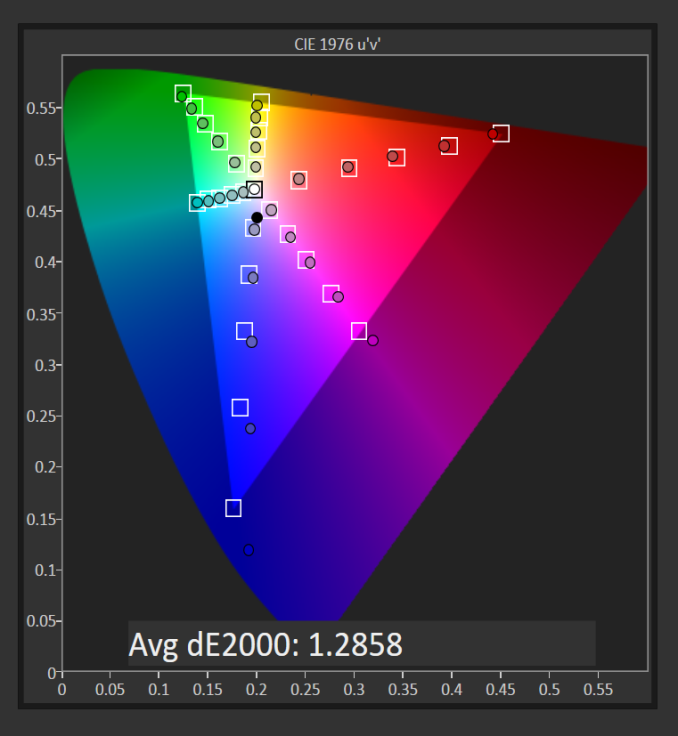
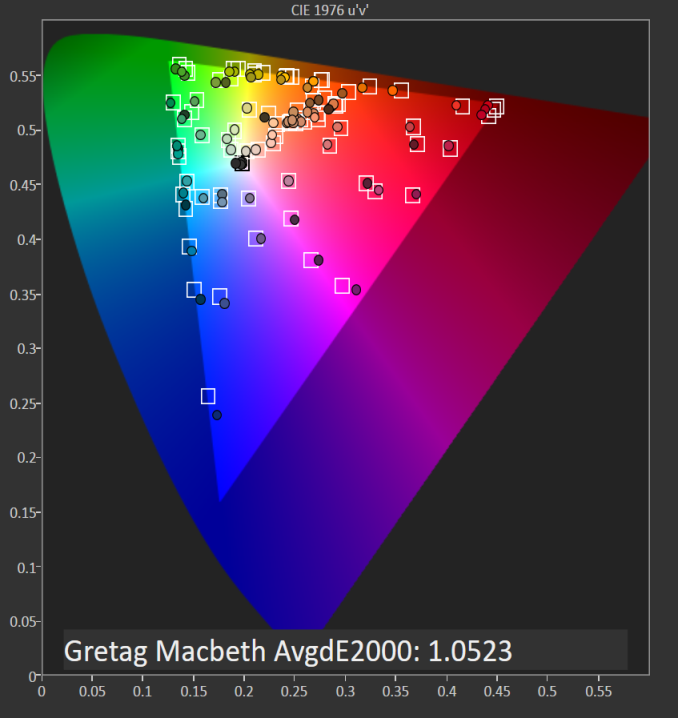









116 Comments
View All Comments
dovah-chan - Thursday, February 12, 2015 - link
I guess apple does it out of fear of receiving criticism for running hot or having a loud cooling system to tame the GPU? Maxwell doesn't run that hot so they should be able to keep it in check with at least a 965M but any higher would likely cause issues. They should at least include the option for a higher end mobile card.The school I'm at has 2011 iMacs with a 6570D and they tank so hard when using spaces and mission control. (not to mention the magic mouse is awful)
TheinsanegamerN - Tuesday, February 17, 2015 - link
given the 750m's TDP, nothing higher than the 850m would be feasible. the 965m draws way too much power for that machine to handle.tipoo - Thursday, February 12, 2015 - link
Yep, I've been a lifelong PC guy, but I'm enjoying my 15" rMBP a lot. I just wish there was more GPU grunt for when I use Boot Camp for the occasional game.fokka - Wednesday, February 11, 2015 - link
one would think some kind of 960m should be in the cards, when the rmbp get upgraded and such a card is available from nvidia. that should be quite a bit faster than the current 750m, which is getting a bit old in the tooth, especially considering the machines price.tipoo - Sunday, February 15, 2015 - link
Brett? Anyone? Beuller?eanazag - Wednesday, February 11, 2015 - link
Is the SSD an mSATA or 2.5"?eanazag - Wednesday, February 11, 2015 - link
Nevermind, I reviewed the introduction over again.I have an aversion to LiteOn SSDs. I have no experience with that model, but I have with Dell OEM Lite-On drives as they struggle with garbage collection when Bitlocker is installed (Windows 7). For Windows 8 Bitlocker I recommend only encrypting used space option.
peterfares - Wednesday, February 11, 2015 - link
Shame that it just has HDMI output. They should have put a DisplayPort (or two) outputs just like the MBP the body mimics. Can't even run an external WQHD screen, very lame.BillyONeal - Wednesday, February 11, 2015 - link
This is literally the only reason I have not bought one yet. :/fokka - Wednesday, February 11, 2015 - link
it has hdmi 1.4a, which should be good for 1600p/60p or 4k/30p according to wikipedia: https://en.wikipedia.org/wiki/HDMI#Version_compari...